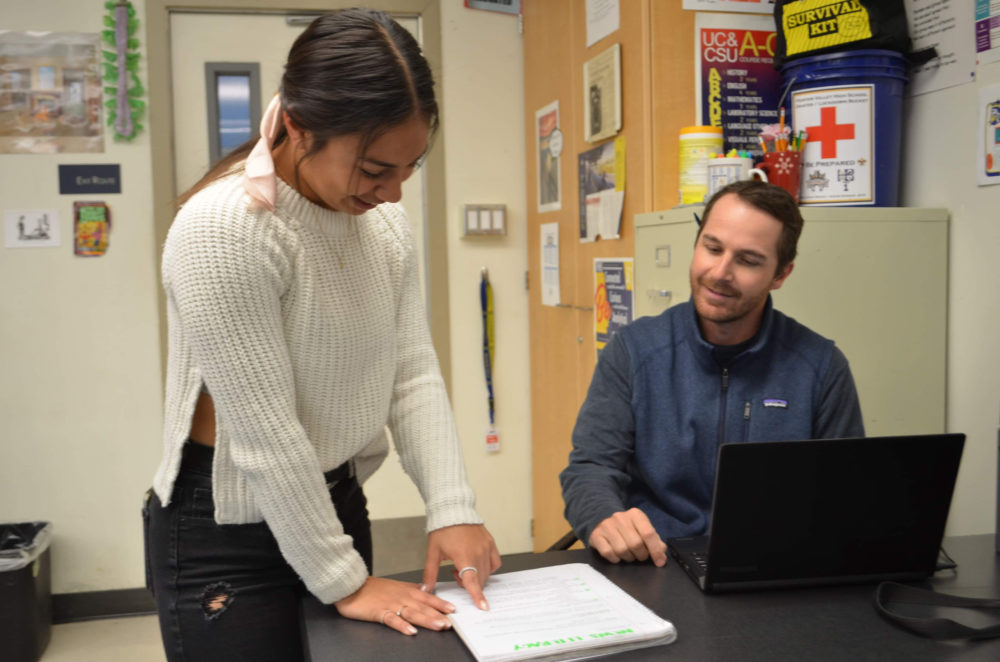
By Camelia Heins
Physics teacher Yung Tae Kim, or Dr. Tae, gave a Ted Talk about skateboarding and connected it to our learning environment with the concept of “real-time meaningful feedback.” This idea made me realize that there’s an imbalance in the amount of work we’re given compared to the amount of feedback we receive in school.
Feedback from both teachers and peers is essential to helping students learn from an assignment and improve on any weak areas, yet many teachers frequently grade assignments with no comments or rarely hold peer review sessions.
The lack of feedback students receive on their work is unacceptable. How do students improve when they only receive a grade from their teacher with no comments or criticisms? Without feedback, students don’t know what they did right or wrong, and they’re left unsure of what to do next. With feedback, however, students can consciously revise their work and move forward in their learning.
Receiving feedback from a teacher is crucial to the learning process. Whether it be comments on assignments or one-on-one discussions, all feedback from teachers carries a weight that prompts students to look at their assignment once more. When students talk to their teacher about their feedback, they’re also being proactive about their learning and strengthening their student-teacher relationship.
It’s understandable why teachers refrain from giving feedback on every assignment; it’s nearly impossible due to the teacher-student ratio and quality feedback is time-consuming, and teachers are crunched on time due to our 50-minute periods. When teachers are unable to give feedback, they often turn to peer reviews to ensure students give and get some kind of feedback.
Getting feedback from peers is not popular among many students, peer-reviewing is more valuable than one may think. It allows students to see other perspectives and practice their critical thinking skills as they learn how to edit work and give feedback. Rather than writing online comments to peer review, there should be peer review sessions in class with a group of two to four students so that they can meaningful conversations and share live feedback with each other.
In-class peer reviews are especially beneficial because receiving live face-to-face feedback allows for better connections and quality feedback between peers. You can pass questions back and forth and discuss solutions on anything the writer might be struggling with. Compared to receiving online feedback, it makes it difficult to put a face to someone’s work and understand one’s intentions. Giving feedback online feels more like a requirement that most don’t care about while having a conversation with someone makes the feedback process more genuine and helps a person improve in their work as the discussion is taking place.
Putting the type of feedback aside, receiving any feedback is better than receiving none. There should be opportunities for feedback in every class and not just during lunch or after school. Even minimal types of feedback, like giving back graded tests for students so that students look over their mistakes, is beneficial.
Here are some ways teachers can give feedback:
- For online assignments, leave comments to help explain why points were deducted or to highlight what the student did well.
- For group projects, give reflection sheets for both the instructor and the student to fill out.
- For essays, add some brief comments about their work while putting in their grade.
- For rough drafts on a writing assignment, use peer reviews.
- For any assignment, pull a student aside during class and have a one-on-one discussion about their work.
- Hand back graded tests for students to check what they got wrong and to ask questions, or privately review the test with certain individuals, such as those who performed poorly, if possible.
- Have students keep a notebook or Google Document to write down feedback notes from their peers and teacher.
- When giving feedback, make sure you are specific about what the student is good at or needs to work on.
- Teach students how to give effective and helpful feedback to their peers.
- Hold in-class peer review sessions in groups of three to four students with specific criteria that they should address during their conversation.
- Help students formulate a plan to fix their mistakes or build on them after receiving feedback.
Feedback is a crucial part of learning because it helps students understand what they’re doing well and poorly, and it helps teachers know what their students need help with. Students need feedback to learn, to improve, and to succeed.





